Toilet Buying Guide: Which To Buy & How To Choose

In the market for a new toilet? With so many types of toilets for sale it can be tricky to choose, which is why we've put together this toilet buying guide.
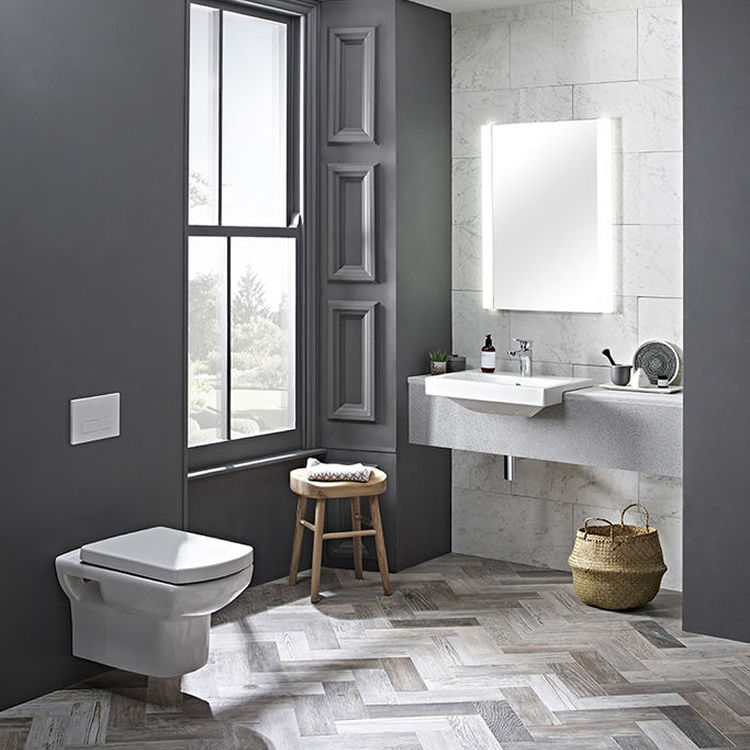
Whether you are in the UK or elsewhere, inside you’ll find everything you need to know before buying a new toilet, including:
- What you need to know before choosing a toilet
- The different types of toilet design
- Rimmed Toilets vs Rimless Toilets
- Single Flush or Dual Flush?
- Choosing your toilet style
- How to measure up for a new toilet
- When to buy a toilet
What You Need to Know Before Choosing A Toilet
There are many practical considerations to look at ahead of buying a toilet. This can help alleviate costly plumbing changes, as well as helping to identify what kind of toilet is best suited for the space.
How Far Can A Toilet Be From The Soil Pipe and Where Is It?
The first crucial factor to consider is both where the soil pipe is, and the layout of the room in terms of the fixtures and fittings being considered alongside your WC, as this may provide limitations in where the toilet can be positioned.
The soil pipe is where the waste-water from the toilet exits, so naturally, these need to located in close proximity with each other. Generally, the maximum length away that toilets can be installed from the soil pipe is 6 metres, however, it is highly recommended to be shorter distances. The soil pipe is located either on the outside of the house as an exposed pipe that runs the full length of the house, with a vent at the top. If it isn’t visible, it will be highly likely to be a concealed one with the vent in the roof or above the attic. Most pipework will be ‘boxed in’ within your bathroom or hidden behind furniture for a tidy finished appearance, however, it should be largely apparent where it is located from some simple observation. It is recommended that expert help from a fitter or plumber is obtained before purchasing any items in order to check compatibility, and the impact on budget of any plumbing changes required.
Additionally, it is also important to understand the connection from the toilet to the soil pipe and the type of outlet installed. These are broken into:
- Horizontal outlet: this pipe runs parallel to the ground, with a slight incline to ensure waste can move along the pipe
- Vertical outlet: this pipe runs vertically behind the toilet
- Left-facing outlet: fairly self-explanatory, this pipe runs to the left of the base of the toilet
- Right-facing outlet: again, the clue is in the name, and this pipe runs to the right of the base of the toilet.
Are You Looking at Fixing to a Wall or the Floor?
If a wall-hung toilet has caught the eye, then it is important to factor in the type of wall and strength, or alternatively how it is going to be fixed. Floorstanding toilets, such as back to wall toilets and close coupled toilets, do not require a strong frame or wall to support them as all the weight goes through the bottom of the pan. However, a wall hung toilet needs to support the weight of the toilet - as well as the user - since any wall that isn’t adequate could lead to serious damage and injury. As such, it is important to fix them into a stud wall where the steel frame can be installed strongly into the wall itself, or by building a faux wall that is resilient and can withstand the bearing weight. Keep in mind, the latter option will take up additional space in your bathroom so could impact on layout and sizing.
How Big Space Do You Need For a Toilet?
Most toilets have an outward projection of around 800mm or less, and a width of 600mm or less. Nevertheless, wherever the toilet is positioned, it will need to leave access for sitting and comfort for users, as well as easy access to use other fixtures and fittings, as well as not making the room feel claustrophobic. Additionally, for more traditional toilets, the type of cistern required and design of the toilet, could also bring the height of the room into consideration.
If the space is limited then a short projection toilet is an option, which is where the pan, or bowl, of the toilet has a shorter outward depth making it more compact and suitable for smaller spaces such as cloakrooms and ensuites.
Using an existing toilet, if you have one, should provide a good indication of the appropriate size and any leeway in width or depth. Alternatively, if starting from scratch, then creating a floorplan, and using a 3D Bathroom Design Service can help give a visual picture of how your bathroom may look and help to identify any problems early on.
Where is the Toilet Positioned?
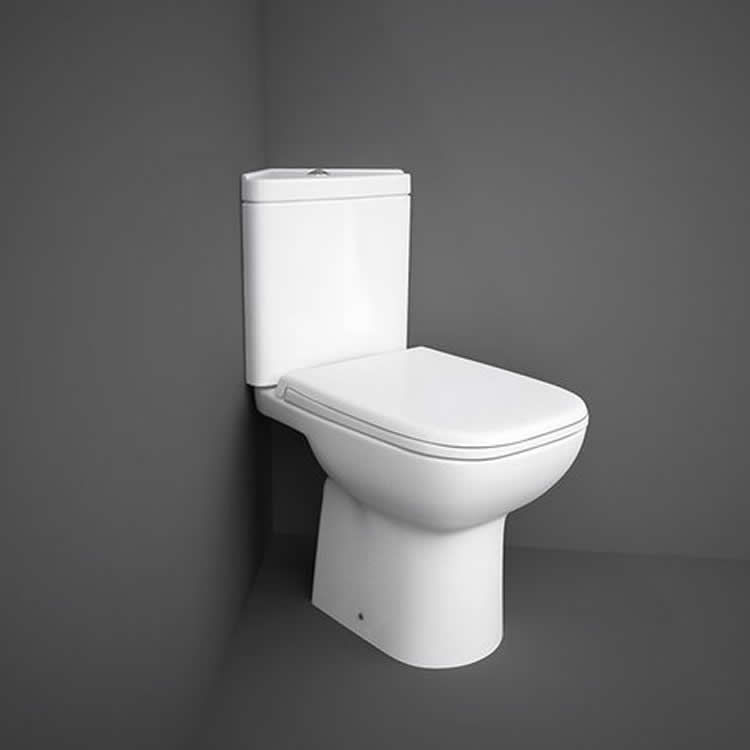
Toilets usually face – by and large - perpendicular to the wall they’re attached to, but depending on the space you’ve got to work with you can also buy corner toilets. These are toilets with an angled cistern that sits within the join of walls, making it an ideal space-saving option if you are tight for room or want to maximise every available part of the room to its potential.
Can You Put A Toilet Under A Window?
If the bathroom has a window present, and taking advantage of the space is a consideration, then a question may be whether it is possible to place the toilet there, or are there any barriers to doing so?
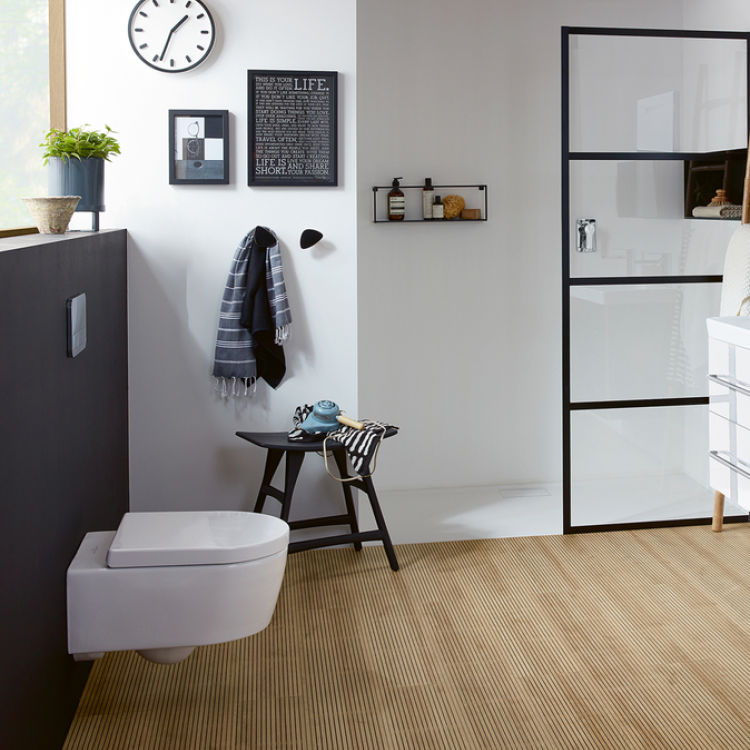
While it is often more logical for a toilet situated on a full-size wall, there may be an option to place it underneath a window if space permits, and the dimensions of the window are not limiting. This is alongside the location of the soil pipe mentioned previously. Considerations need to include whether the height of the toilet itself and cistern can fit within the space, regardless of whether it is an exposed or concealed cistern. If it is concealed, for wall hung toilets and back to wall toilets, it needs to factor in the size and height of the frame as well, while the height and positioning of the pan needs not to be so low that it makes the toilet impractical to use. Additionally, for exposed cisterns, these shouldn't be so high to impact access or block the window if quite low down.
What Are The Different Types of Toilet?
Once the considerations of location, size and the practicalities of getting a toilet installed have been looked at an identified, it is time to consider the design and toilet that best suits the taste or theme of the space. This section breaks down each toilet type, how to identify them, and what to look for.
Close Coupled Toilets
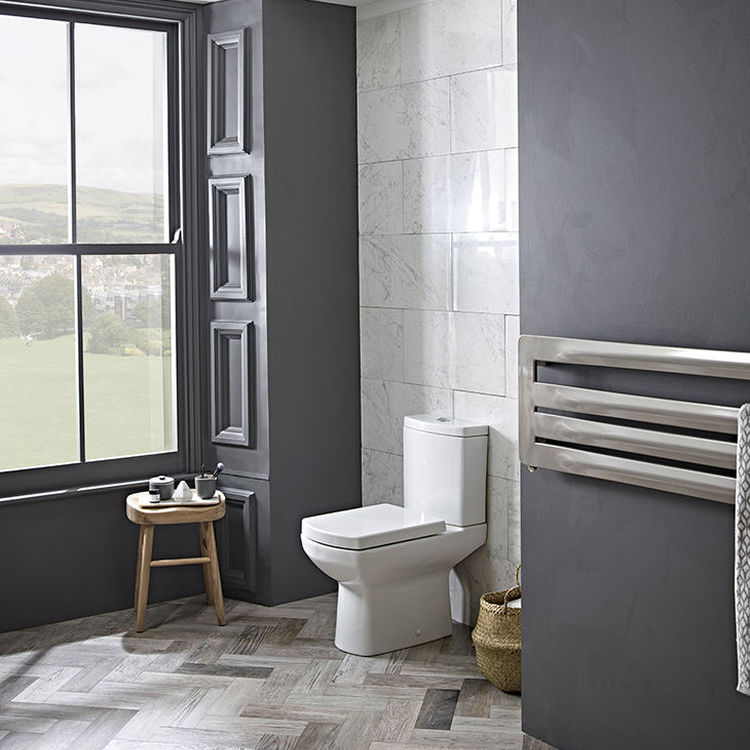
Probably the most staple and common toilet associated with the British family bathroom, and one most will be familiar with. The close coupled toilet features a floorstanding pan or bowl that is sealed in, and comes with an exposed cistern that is bolted or joined directly to the pan itself. Modern close coupled toilets tend to come with push buttons, while more traditional designs tend to feature lever handles, although this is not always the rule.
Depending on the preference when it comes to exposed pipework, close coupled toilets also come in two common styles:
Open Back Close Coupled Toilets
Open Back close coupled toilets have a pan that has a gap at the rear of the pan, while the cistern sits flush to the wall. This gap at the back is there to provide easy access to pipework, and for maintenance.
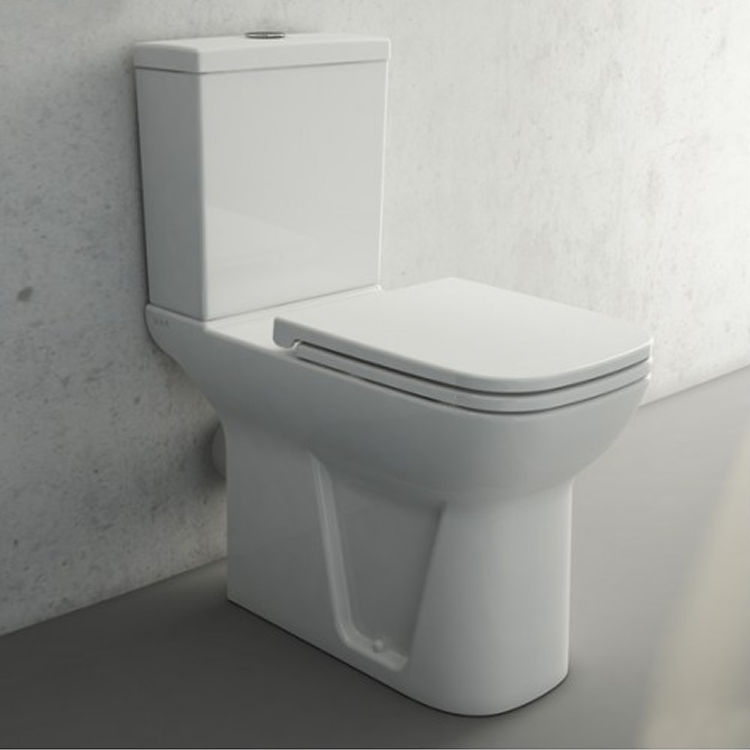
Closed Back/Back to Wall Close Coupled Toilets
Close Coupled Back to Wall Toilets, or closed back close coupled loos, have a cistern and pan that sits entirely – as the name suggests – flush to the wall. This conceals away the internal workings and pipework, without having to clean or reach around the back of the loo. This provides a tidy aesthetic when installed for a look that fits in with the rest of the space.
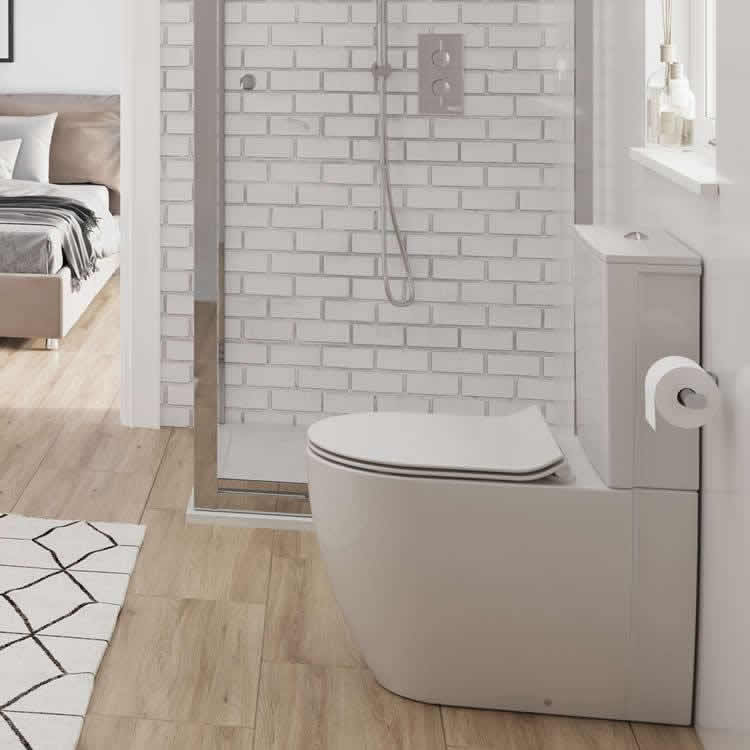
Wall Hung Toilets
With a wall hung toilet, or floating toilet, the clue is in the name: the bowl is mounted to the wall and suspended a short distance from the floor, with a cistern concealed into a wall and supported by a frame. The wall hung toilet frame is usually made from a strong material such as steel in order to support the strength of the toilet, and also weight of the person using it.
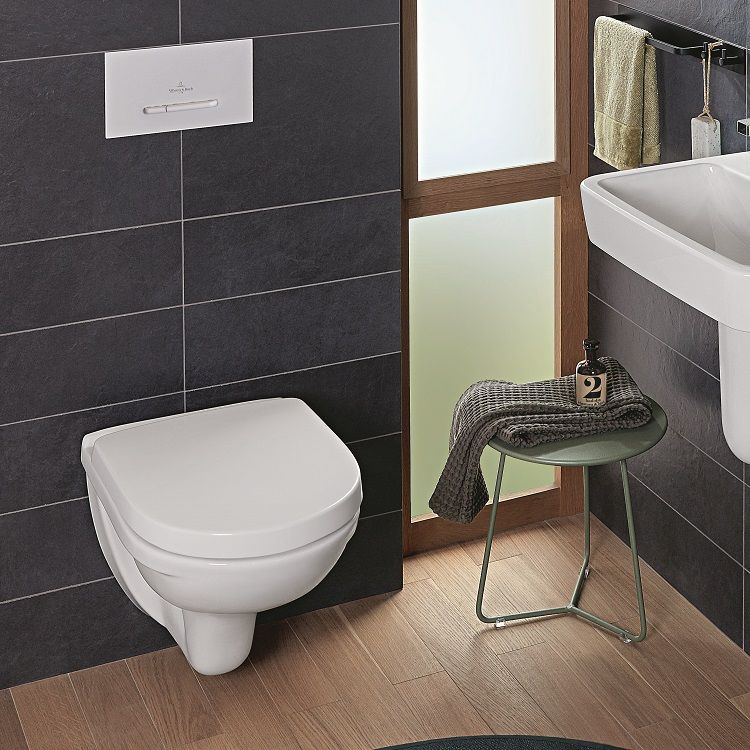
They are growing in huge popularity as they open out the floorspace to its full size making the room look larger, while also merging into the space for a consistent look, where no pipework or fittings are on show. By and large, they are often more of a modern design, and can be paired with a toilet flush button of a variety of colour choosing, again to choose in with the theme and style of the space, as well as personal taste.
Different sized frames can be purchased adjusting the height of the toilet to suit needs, while they are also incredibly easy to clean both directly, and around.
Back To Wall Toilets
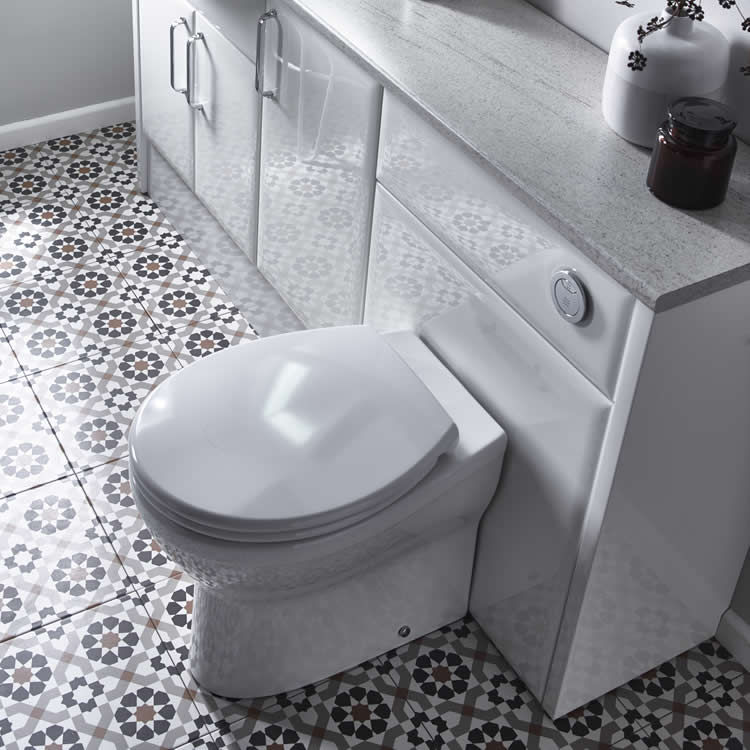
Firstly, these are not to be confused with back-to-wall close coupled toilets. Nevertheless, they do have something in common in that the pan of the toilet sits completely flush to the wall.
However, back-to-wall toilets, or btw toilets for short, have a concealed cistern much like wall hung toilets. As the weight is supported through the floor, they don’t require a frame. Nevertheless, consideration has to be given to the height as the cistern required will either be a standard size or extended height cistern for larger height toilets.
Here are a couple of benefits of back to wall toilets:
- Great for tight spaces as you can build the toilet into bathroom furniture as well as walls, and even combine the toilet, basin and storage in a combination unit
- The cistern is concealed for a more streamlined visual design
Low Level, Medium Level and High Level Toilets
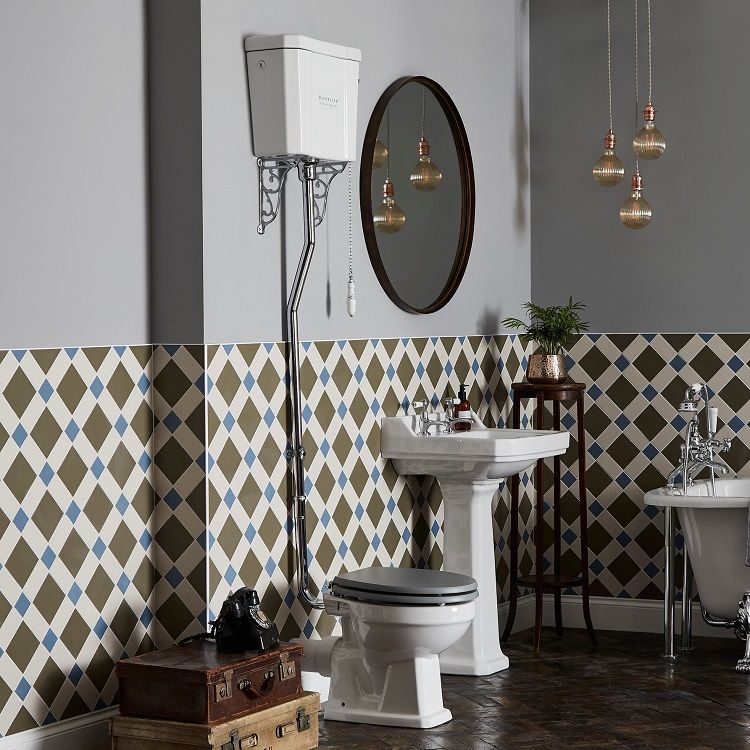
While toilets will fall into a modern or traditional design, there are certain toilets that feature a more period-style design, making them ideal for those looking at Edwardian, Georgian or Victorian-style spaces. These are much like close-coupled toilets but instead of a connected cistern that is bolted to the pan, these are connected by a pipe and usually wall-mounted by brackets. These are called Low Level Toilets, Medium Level Toilets or High Level Toilets. The sizing in the name refers to the respective height and positioning of the cistern, and length of the pipe. Low Level Toilets usually sit quite close together, while high level toilets can be up to 2 metres or ceiling height. Due to this, high level toilets usually come with a pull-lever and chain flush, while the lower ones operate by push button or lever handle flush.
Here are a few benefits of traditional toilets:
- The ability to decide the cistern height gives you control over the aesthetic of your bathroom
- These designs give a really distinctive feel to any bathroom looking to create a historical look
- The elevated cistern makes it difficult for people to fiddle with the mechanism
Rimmed Toilets vs Rimless Toilets
Another choice that will have to be made is whether the pan should be a rimmed toilet or rimless toilet.
Most standard toilets come with a normal rim, or boxed rim, where the water flushes from the cistern into the rim and pours our through little holes under the rim.
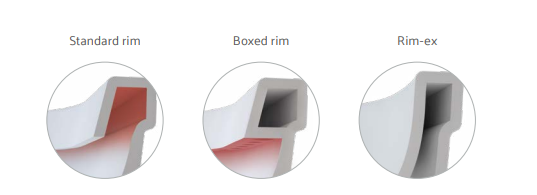
Rimless toilets (which some manufacturers call by their own name, such as VitrA’s Rim-ex) do not feature an inside rim. The advantages of a rimless toilet over one with a rim is that it means the bowl is cleaned more directly, and often more efficiently. Additionally, it also reduces cleaning time with no place for grime or dirt to hide, and no need to clean regularly under the rim, which can often be forgotten.
What Type of Flush Should I Have?
Toilets can come as single-flush or dual flush. The latter option has grown hugely in popularity and is certainly more common as people have become more eco-aware, and look at conserving water.
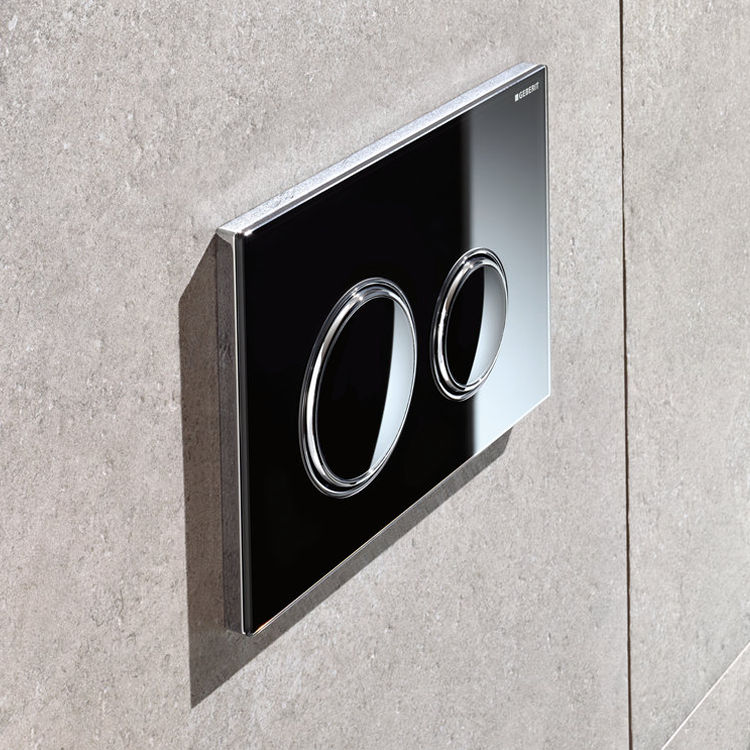
Single-flush toilets often use a single push button or a lever handle, where as dual-flush is usually via a push button or dual flush toilet flush plate or button. These are usually identifiable by two separate buttons, the large button signifying a large or “full flush” using 6 litres of water, while the smaller one is a small or “half-flush” at 3 or 4 litres. Some toilets, and accompanying frames, can be adjusted to flush a lower level, such as 4.5 Litres so it is worth looking at this ahead of purchase, if water-saving either in terms of money or environmentally, or both, are factors.
Alongside the rim choice, as well some toilets come with flush upgrades or in-built flush mechanisms that help to rinse the bowl more effectively. Examples of this include DirectFlush and Twist Flush from Villeroy and Boch, while you may also see other variations such as cyclone flush.
What Style Toilet Should I Have?
While the type of toilet will often dictate by and large the style of toilet, certainly for wall hung toilets which are nearly always modern in design, for close coupled and back-to-wall toilets, the next question to ask is what style to go for.
Additionally, it is also important to consider those size-factors, and also design features.
Modern Toilet or Traditional?
Modern toilets tend to have a smoother shape, and more angular or curved design, accompanied with either a wrap-over or sandwich soft-close toilet seat.

As already covered, traditionally-designed toilets tend to have more exposed fittings, while the accompanying toilet seat can be standard or soft-close. Away from the universal white colour, these can also comes in rich wooden or coloured tones. The pans also tend to have more detailed designs, with in-built curves and more regal, pedestal-like designs, while they are lever-handle or pull-chain and flush.
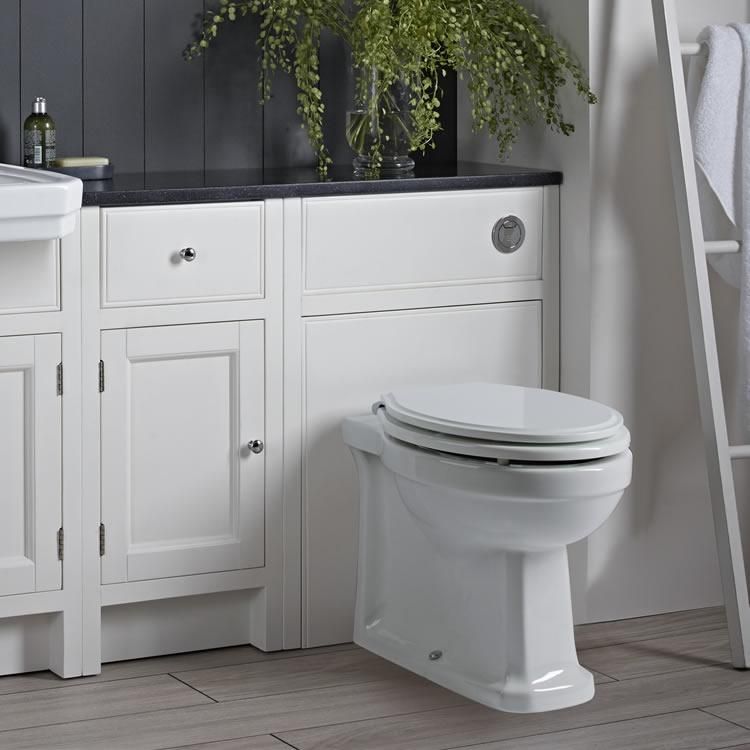
What Shape Toilet Do You Want?
It may be a thought that all toilets are the same shape but contrary to belief, this isn’t actually the case. In fact, toilets can be broken down into three common shapes:
- Round/Oval Toilets – These are toilets that feature a curved front, and a pan and seat that curves in at the back in a more rounded, sweeping arc
- D-Shaped Toilets – These feature a more flat back and curve round at the front just like a letter D
- Square Toilets – As stated, these are toilets with more angular shapes and linear edges. Some also have curved corners, where they could be called a ‘squircle’ shape.
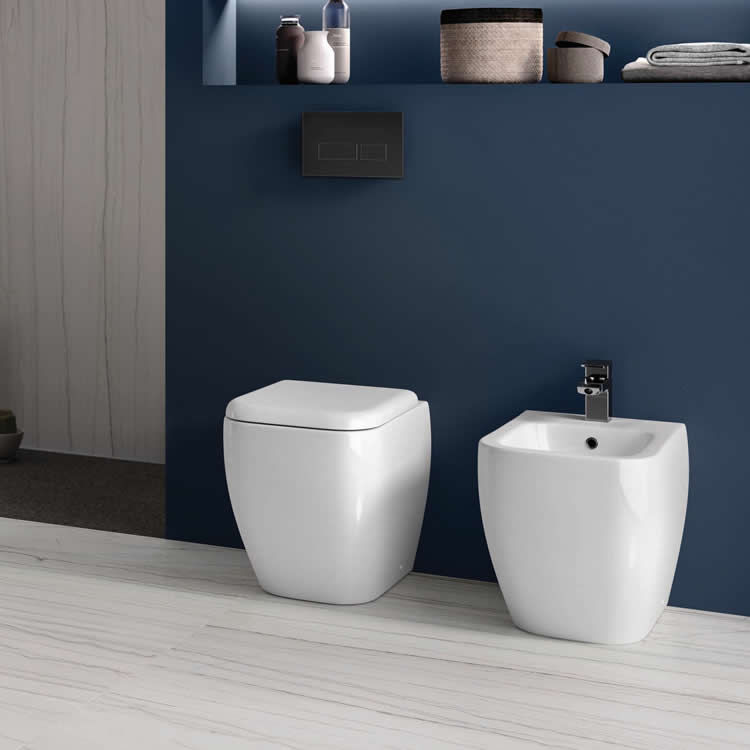
A lot of toilets are D-Shaped because of their simplicity and ability to fit against the wall with ease. More rounded toilets tend to be traditional in style, while square toilets tend to be more modern and likelier to be wall hung in design.
What Type of Seat Do You Want?
Toilets come with a choice of seat designs, and in some cases closing mechanisms. Operating using hinges, standard toilet shuts lift and shut at a normal speed. Soft-close seats are ones that drop and close at a smoother, slower speed. This is kinder on the toilet, as well as reducing the noise impact, and safer for users.
These can also come as wrap-over toilet seats and covers, where the cover fits over the seat for a tidy look, or sandwich seats. These are seats where the seat and lid sit on top of each other, much like the slices of bread for a sandwich. These can also be standard size or slimline, as well for a thin, crisp appearance.
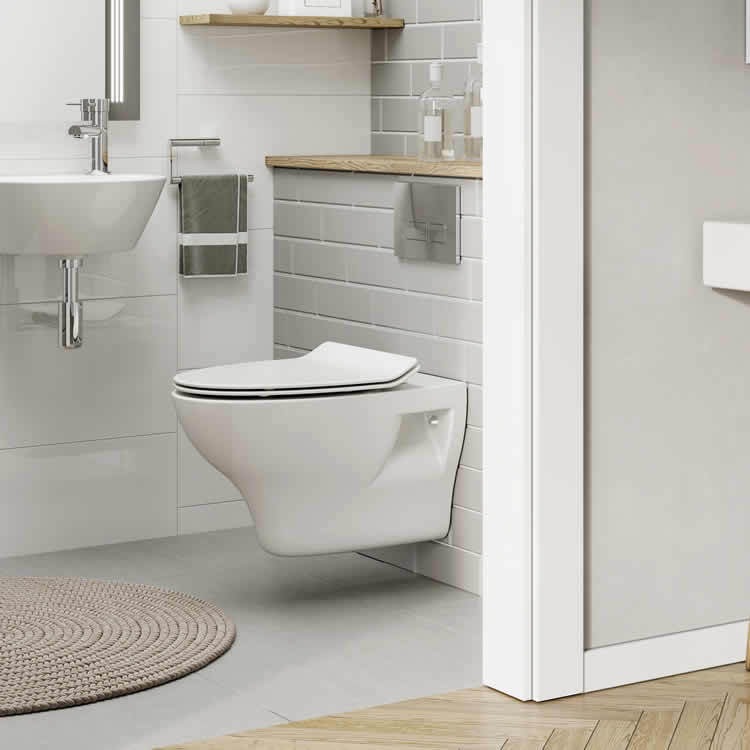
While many toilet seats come in standard white colours (or matching the colour of the toilet), there are some which come with a variety of coloured or wood tone options, particularly those traditional in look.
Standard Depth or Short Projection Toilet?
This is partly determined by the size of the space your toilet will fit into. If the space is smaller or limited, then a standard toilet may prove to be too large for the space. Therefore, there is an option called a short projection toilet, which has a narrower outward depth (or length). While it doesn’t lose any style benefits, it does mean a more smaller pan and toilet that makes it more compatible for these spaces.
What is the difference between a Standard Toilet and Comfort Height Toilet?
Another option to consider is whether to choose a standard height toilet or a comfort height toilet. The difference between these is that the pan on a comfort height toilet is much bigger. While originally being designed to help those who struggle to sit down, such as people with disabilities, mobility issues or joint issues, or who are elderly, they have actually grown in popularity to become a staple across many bathrooms, simply because of the extra comfort and luxury they afford when sitting down.
What Colour Toilet Would You Like?
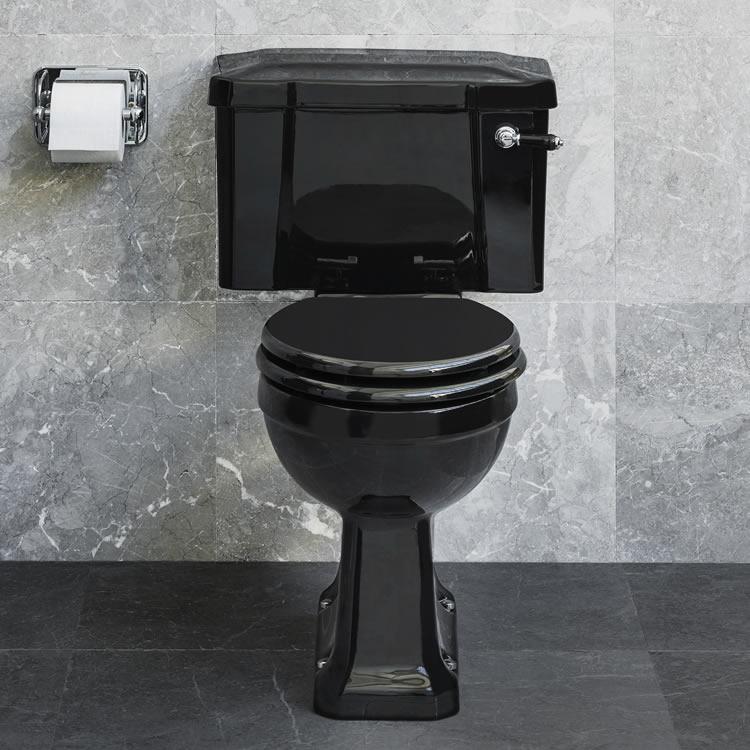
Most toilets are glazed white, for a couple of reasons. Firstly it’s the default colour of ceramic or porcelain meaning fewer steps (and lower costs) in the manufacturing process, but it’s also associated with hygiene thanks to the ease with which dirt can be seen.
But while the majority of toilets are white, you are far from limited to this colour when deciding which one to buy! There are many coloured toilets on offer to buy, with distinctly modern black available for those looking for a more monochromatic colour scheme, subtle cappuccino or even greige. Additionally, cisterns and fittings, such as flush plates, can come in many varied styles from chrome, brass, black and more.
Upgrading to a Smart Toilet or Bidet Toilet
If you are looking for a continental feel, as well as extra hygiene, then upgrading to a bidet toilet or smart toilet combines the practicality of a toilet with that of a bidet. Standard bidet toilets, or shower toilets, feature a mechanical flush that releases water like a bidet to clean intimate areas. More high-tech toilets, such as the VitrA V-Care range, include everything from multiple washing functions that suit different people, seat warming, air drying, and even cleaning functions.
Due to this, they are at a higher price point and a more premium product, but are a great investment for those who want a hotel-style feel, who want a multitude of features, and the space-saving benefits of combining bidet and together.
There are numerous benefits associated with these toilets, namely the personal hygiene. However, there is also a more eco-conscious benefit in the reduction of the usage of toilet paper, which relies on cutting down of trees in the manufacturing process, as well as not causing damage to sewers and pipes (or pesky clogs and blockages!) like paper can do.
How to Measure Up For A New Toilet
If you are looking for a toilet similar to an existing one, it may be worth doing a spot of measuring when it comes to size.
Measuring Wall Hung Toilets & Back to Wall Toilets
For wall hung toilets and back-to-wall toilets, it may be an easy swap if you are happy with the existing dimensions. Simply, measure from floor to the top of the pan (exclude the seat) for the height. For the depth, measure from the wall to the further front point of the pan (usually the top of the bowl or rim). And for the width, measure from each edge at the furthest edge of the pan, which is either the back for more D-shaped pans, or the middle of the pan for more rounded pans that curve around.
A lot of toilets can be easily swapped with existing frames or cisterns, however, if you are unsure, it may be worth getting advice from a fitter or plumber in advance to avoid any later issues.
Measuring Close Coupled Toilets
For close-coupled toilets and traditional toilets, measuring is slightly differently. Firstly, the height should include the cistern although they may be mentioned separately. This will give you an indication of how much space it takes up vertically.
The width and depth are measured in the same way as wall hung and back to wall toilets, with depth from the wall or back of the cistern to the front of the pan, and width from the widest points of the toilet, be it the cistern or the middle of the bowl.
Building Code Considerations
If you’re measuring a space without a toilet, bear in mind that most building codes require at least 15 inches of space between the rim and the wall.
When To Buy A Toilet
We’ll touch on this briefly as it is a question we’ve been asked in the past. Put simply, there are a few indications that it’s time to buy a new loo:
- The current one leaks. No one wants a leaky toilet.
- Components are starting to fail due to age and wear and tear. If you find yourself doing a lot of repairs and fiddles, maybe it’s time for a new one.
- You’re redecorating. Depending how drastically different your new bathroom is to your old one, the existing toilet might look quite out of place!
- You’re getting a new suite. Whether you fancy an upgrade or you’ve moved somewhere new and don’t like the one you found there, a new bathroom suite involves a new toilet.
Need Toilet Help?
There’s certainly plenty to think about when it comes to a toilet. While this information is comprehensive, and hopefully useful, it is worthwhile taking the time to think about the toilet ahead of purchasing to find the right one for your taste and needs. If you need help choosing the right toilet for your bathroom, we’ll be happy to help.